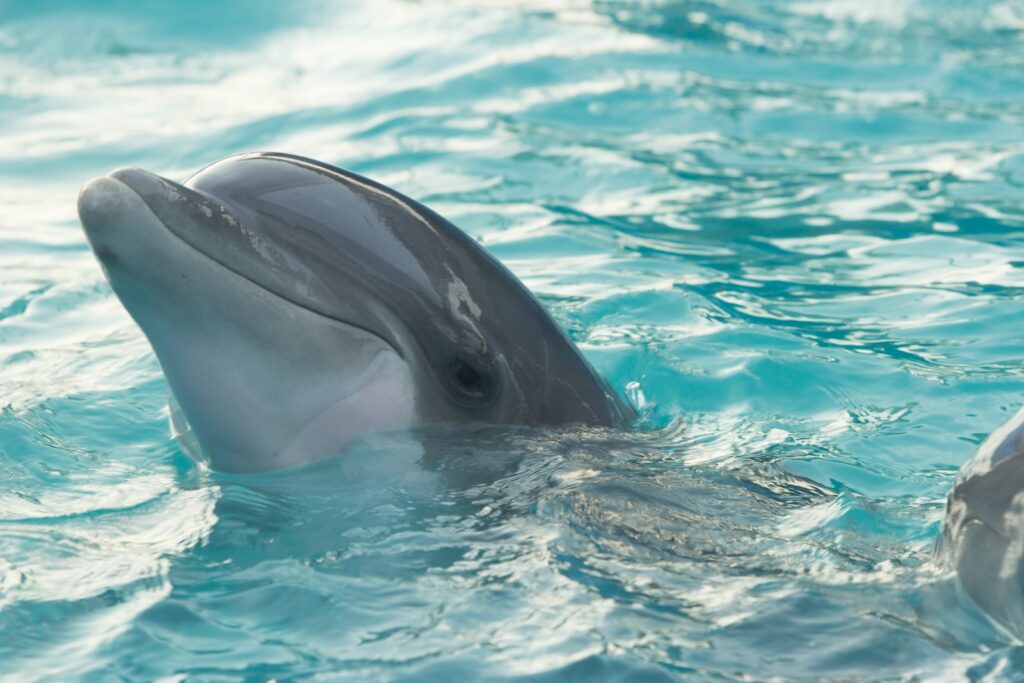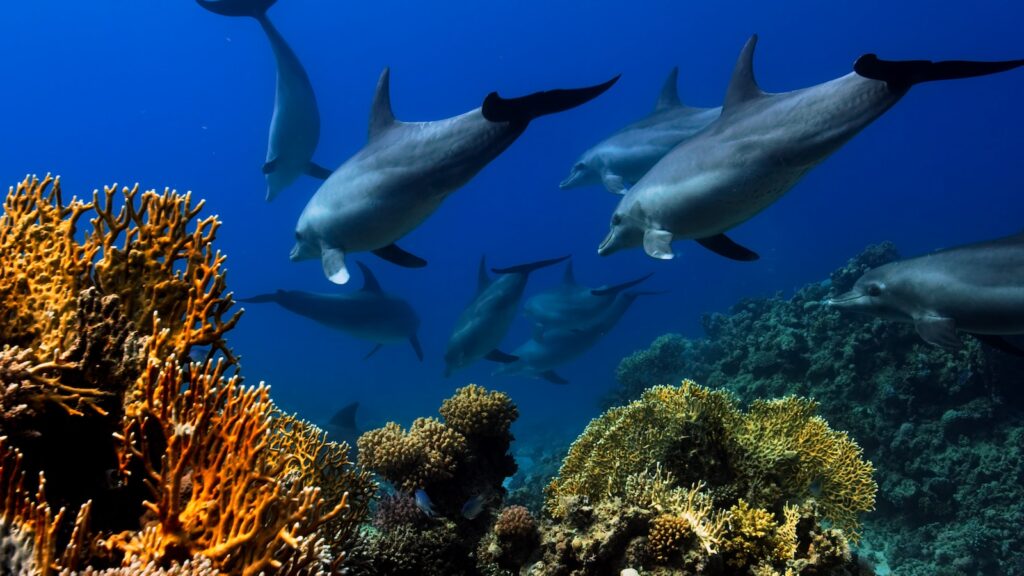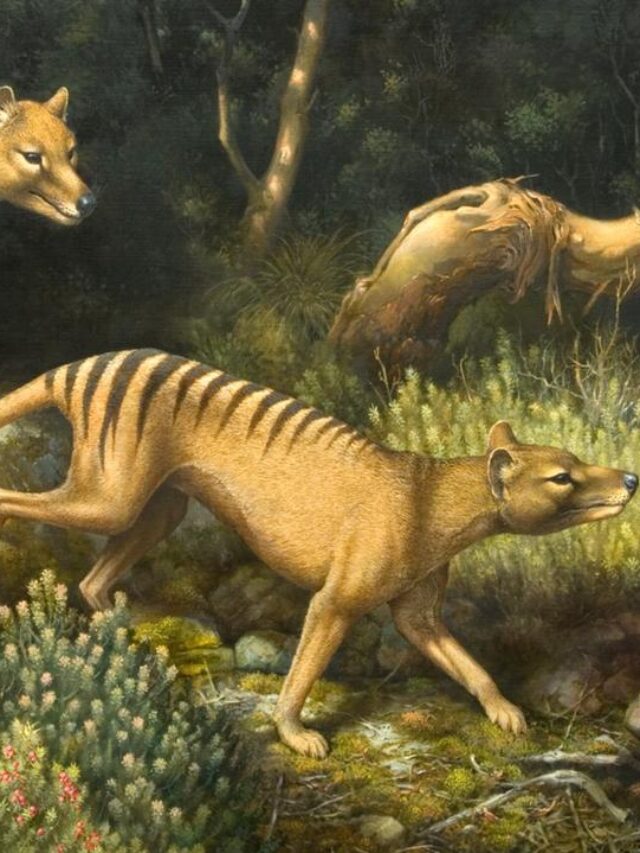The Enchanting Amazina: Dive into the Colorful World of Amazon River Dolphins!
The Amazon River, home to countless wonders, holds a special enchantment within its waters. Within this mythical realm, the Amazon River dolphins, known as Amazinas, captivate all who set eyes upon them. With their vibrant colors and playful nature, these magical creatures transport us into a world brimming with beauty and fascination. Let us dive into the colorful symphony of the Amazinas and explore the magical realm they call home!
A Colorful Symphony: Meet the Mesmerizing Amazina!

-
Graceful Aquatic Dancers: The Amazinas, also known as pink river dolphins, gracefully glide through the Amazon River, their movements resembling elegant dance routines. Their sleek bodies, measuring up to 8 feet in length, are adorned with a captivating array of colors that shift and shimmer under the sunlight.
-
A Kaleidoscope of Hues: The mesmerizing shades displayed by these enchanting creatures range from pale pink to vibrant shades of lilac and even iridescent blues. Their unique coloration is a result of their blood capillaries being closer to the skin’s surface, allowing their emotions to be visually displayed to the world.
-
Mystical Encounters: To encounter the Amazinas in their natural habitat is an ethereal experience. Witnessing a pod of dolphins swimming together, their dazzling colors blending harmoniously, evokes a sense of awe and wonder. As they breach the water’s surface, the sunlight reflects off their glistening skin, creating a magical spectacle.
-
A Chorus of Echoes: The Amazinas communicate through a complex system of clicks, whistles, and echolocation. Their unique vocalizations create a symphony of sound that resonates through the river’s depths. It is said that those lucky enough to listen closely might catch a glimpse of the Amazinas’ secret language, a melody that enchants the heart.
-
Playful and Curious: These delightful creatures are known for their playful nature and curiosity towards humans. They often approach boats, swimming alongside them, seemingly wanting to make new acquaintances. Their friendly disposition and willingness to interact create moments of joy and laughter for those fortunate enough to encounter them.

-
A Hidden World: Exploring the Amazon River unveils a hidden world teeming with life, where the Amazinas hold a special place. Their presence is a reminder of the remarkable biodiversity found within these waters, captivating both scientists and nature enthusiasts alike.
-
Ancient Legends: The Amazinas have been an integral part of Amazonian folklore for centuries. According to ancient tales, they possess magical powers and can shape-shift into humans. These legends have contributed to the Amazinas’ mystical reputation, making encounters with them even more enchanting.
-
Guardians of the River: The Amazinas play a crucial role in maintaining the delicate balance of the Amazon River ecosystem. As predators, they help regulate the population of smaller fish, ensuring the river’s harmony and sustainability. Their presence is a testament to the interconnectivity of all species within this vibrant ecosystem.
-
Conservation Efforts: Unfortunately, the Amazinas face numerous threats, including pollution, habitat destruction, and illegal fishing practices. Conservation initiatives have been put in place to protect these magical creatures and their habitat. By supporting these efforts, we can ensure the survival of the Amazinas for generations to come.
-
A Call to Adventure: The allure of the Amazinas beckons us to embark on our own journey of discovery. Whether it be exploring the Amazon River firsthand or learning more about these magnificent creatures from the comfort of our homes, the Amazinas offer an invitation to immerse ourselves in their colorful world and embrace the magic that surrounds them.

Some interesting facts about the Amazon River Dolphin:
- Colorful Appearance: Amazon River Dolphins, also known as “boto” in Brazil, are known for their striking pink or light gray coloration. Their unique pink hue is attributed to the blood vessels close to the surface of their skin.
- Freshwater Dolphins: These dolphins are the largest freshwater dolphins in the world and are known to inhabit the freshwater systems of the Amazon River Basin, including the Amazon River and its tributaries.
- Unusual Facial Features: Amazon River Dolphins have distinctive features, including a long, beak-like snout and unfused vertebrae in their necks, allowing for greater flexibility. They also have small eyes and a flexible neck, which allows them to turn their heads to better navigate through submerged vegetation.
- Solitary or Social Behavior: While they can be seen alone, Amazon River Dolphins are often found in small social groups, and they are known for their playful and curious behavior. They are sometimes seen surfacing and interacting with each other.
- Echolocation: Like other dolphins, Amazon River Dolphins use echolocation to navigate and locate prey in the murky waters of the Amazon Basin. They emit high-pitched clicks and listen for the echoes to determine the location of objects.
- Diet: Their diet primarily consists of fish, but they are known to feed on crustaceans and small vertebrates as well. They use their long snouts to catch prey in the dense underwater vegetation.
- Conservation Status: The Amazon River Dolphin is listed as a “Vulnerable” species due to habitat degradation, pollution, and accidental entanglement in fishing gear. Conservation efforts are underway to protect their populations and their freshwater habitats.
- Cultural Significance: In many Amazonian cultures, Amazon River Dolphins hold a special place in mythology and folklore. They are often regarded as magical beings, and some believe that they can transform into humans at night.
- Mysterious Behavior: These dolphins are known for their elusive behavior, making them a challenging subject for scientific study. They are often spotted briefly as they surface for air, and much of their behavior remains a mystery.
Amazon River Dolphins are fascinating and unique aquatic mammals that are not only ecologically important but also culturally significant in the Amazon region.
Table with more Dolphin Species:
| Species | Habitat | Average Age | Countries of Distribution | Habits | Reproduction | Color |
|---|---|---|---|---|---|---|
| Bottlenose Dolphin | Oceans, coastal waters, estuaries | 25-30 years | Worldwide, various coastal regions | Social, highly intelligent | Year-round mating, calves | Grey, varying shades |
| Orca (Killer Whale) | Oceans, seas, high latitudes | 50-80 years | Global distribution, diverse habitats | Highly social, apex predators | Seasonal mating, calves | Black and white |
| Common Dolphin | Oceans, tropical and temperate | 25-30 years | Worldwide, in warm and temperate seas | Social, often seen in large pods | Seasonal mating, calves | Various colors |
| Spinner Dolphin | Warm tropical and subtropical seas | 20-25 years | Global distribution, pelagic areas | Highly acrobatic, active | Seasonal mating, calves | Grey with dark stripes |
| Dusky Dolphin | Coastal waters, temperate regions | 20-25 years | South America, New Zealand, others | Sociable, acrobatic swimmers | Seasonal mating, calves | Grey with white belly |
| Hector’s Dolphin | Coastal waters, New Zealand | 20-25 years | New Zealand | Shy and small groups | Seasonal mating, calves | Black, grey, and white |
| Amazon River Dolphin | Amazon River Basin, freshwater | 30-45 years | Brazil, Peru, Colombia, Ecuador, etc. | Solitary or social groups | Year-round reproduction | Pink or light gray |
| Irrawaddy Dolphin | Coastal and freshwater in Asia | 30-35 years | Asia, including India, Southeast Asia | Shy and elusive | Year-round reproduction | Grey to light pink |

This expanded table includes additional dolphin species, along with their respective habitats, average lifespans, countries of distribution, behavioral traits, reproduction patterns, and common coloration. Each species has its unique characteristics and adaptations.

Frequently Asked Questions (FAQs) about the Amazon River Dolphin:
1. What is the Amazon River Dolphin, and where is it found?
- The Amazon River Dolphin, scientifically known as Inia geoffrensis, is a species of freshwater dolphin found in the Amazon River Basin, including the Amazon River and its tributaries in South America.
2. Why are Amazon River Dolphins sometimes pink in color?
- Amazon River Dolphins are known for their pink or light gray coloration. The pink hue is attributed to the blood vessels close to the surface of their skin, which become more visible when the dolphins are excited, warm, or during social interactions.
3. Are Amazon River Dolphins a separate species from oceanic dolphins?
- Yes, Amazon River Dolphins are a distinct species. They have evolved separately and adapted to their freshwater habitat, which is quite different from that of oceanic dolphins.
4. How do Amazon River Dolphins communicate and navigate in the murky waters of the Amazon Basin?
- These dolphins use echolocation, emitting high-pitched clicks that bounce off objects and prey, helping them navigate and locate food in the often turbid waters of the Amazon River and its tributaries.
5. Are Amazon River Dolphins social animals?
- Amazon River Dolphins can be solitary, but they are often found in small social groups. They exhibit playful and curious behavior, including interactions with other dolphins in their groups.
6. What do Amazon River Dolphins eat?
- Their diet primarily consists of fish, but they also consume crustaceans and small vertebrates. Their long snouts are well-suited for capturing prey in the dense underwater vegetation of the Amazon.
7. Are Amazon River Dolphins endangered?
- Yes, Amazon River Dolphins are classified as “Vulnerable” by the International Union for Conservation of Nature (IUCN) due to habitat degradation, water pollution, and accidental entanglement in fishing gear. Conservation efforts are being made to protect their populations.
8. What is the cultural significance of Amazon River Dolphins in the Amazon region?
- Amazon River Dolphins hold cultural significance in many indigenous Amazonian communities. They are often considered magical beings and have a place in local mythology and folklore.
9. Can I see Amazon River Dolphins in the wild?
- Yes, you can observe Amazon River Dolphins in the wild by taking eco-tours in the Amazon Basin. There are several areas in countries like Brazil, Peru, and Colombia where you may have the opportunity to spot them.
10. Are Amazon River Dolphins dangerous to humans?
- Amazon River Dolphins are not considered dangerous to humans and are generally shy and elusive. They are known for their gentle behavior and curiosity when encountered by people.
These FAQs provide a better understanding of Amazon River Dolphins, their unique characteristics, and their importance in both ecological and cultural contexts.
As we bid farewell to the enchanting Amazonas and the captivating world they inhabit, let us carry their magic within our hearts. Through their vibrant colors, playful nature, and mystical allure, they remind us of the beauty and wonder that can be found in the wildest corners of our planet. So, dive into the colorful symphony of the Amazon River dolphins, let their enchantment wash over you, and embark on a journey of discovery unlike any other!















